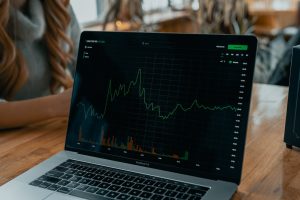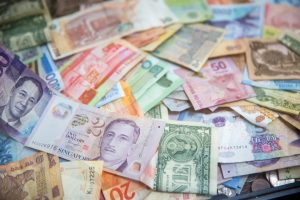Forex trading is all about making profits, and taking profits is an important part of the trading process. Profit-taking is essentially the process of closing out a profitable trade to lock in gains. The objective of profit-taking is to ensure that traders don’t let their winning trades turn into losing ones by holding onto them for too long. In this article, we will explore different ways of taking profits in forex.
1. Setting Profit Targets:
One of the easiest ways to take profit in forex is to set profit targets. Profit targets are predetermined levels at which traders plan to close their trades to take profits. Profit targets can be set based on technical analysis, such as support and resistance levels, or based on fundamental analysis, such as economic news events.
For example, if a trader buys the EUR/USD at 1.1200 and sets a profit target of 1.1300, he/she would close the trade when the price reaches 1.1300. Setting profit targets helps traders to lock in profits and avoid the temptation to hold onto winning trades for too long.
2. Trailing Stop Losses:
Trailing stop losses are a popular tool used by traders to lock in profits. A trailing stop loss is a stop loss order that moves in line with the price of the asset. As the price of the asset moves in the trader’s favor, the trailing stop loss moves with it, locking in profits.
For example, if a trader buys the EUR/USD at 1.1200 and sets a trailing stop loss of 50 pips, the stop loss would move up to 1.1250 if the price of the asset moves up by 50 pips. If the price continues to move up, the stop loss would continue to trail the price, ensuring that the trader locks in profits.
3. Scaling Out:
Scaling out is a technique that involves taking profits in stages. Instead of closing the entire trade at once, traders close a portion of the trade to lock in profits and leave the remaining portion of the trade open to capture further gains.
For example, if a trader buys the EUR/USD at 1.1200, he/she could close half of the trade when the price reaches 1.1250 to lock in profits. The remaining half of the trade would be left open to capture further gains if the price continues to move in the trader’s favor.
4. Using Technical Indicators:
Technical indicators such as moving averages, oscillators, and trend lines can be used to take profits in forex. Traders can use these indicators to identify key levels of support and resistance and take profits when the price reaches these levels.
For example, if a trader buys the EUR/USD at 1.1200, he/she could use a moving average to identify a key level of resistance at 1.1300. When the price reaches this level, the trader could take profits to lock in gains.
5. Using Economic Calendar:
Economic news events can have a significant impact on the forex market. Traders can use an economic calendar to stay informed about upcoming news events and take profits based on the news.
For example, if a trader buys the EUR/USD at 1.1200, he/she could close the trade ahead of a significant news event, such as a central bank interest rate decision, to lock in profits and avoid the volatility that could follow the news release.
Conclusion:
Taking profits is an essential part of successful forex trading. Traders can use a variety of techniques to take profits, including setting profit targets, using trailing stop losses, scaling out, using technical indicators, and using an economic calendar. By taking profits, traders can lock in gains and avoid holding onto winning trades for too long.





